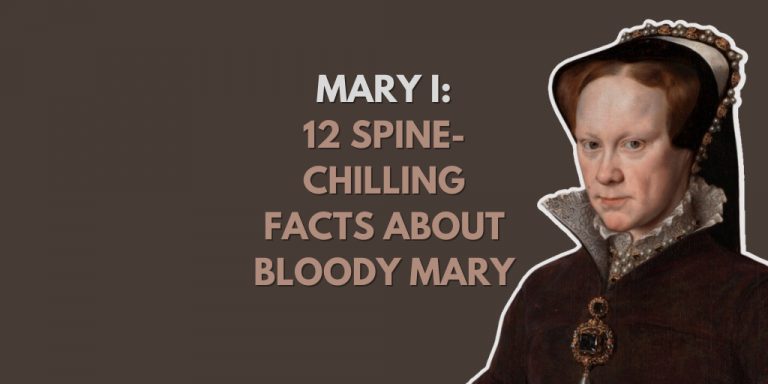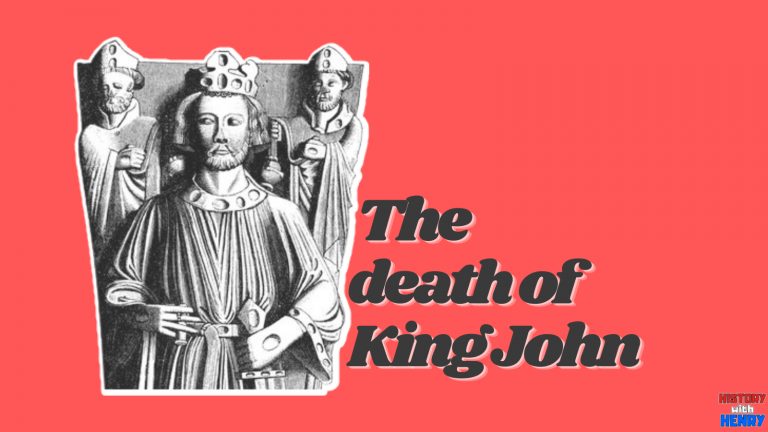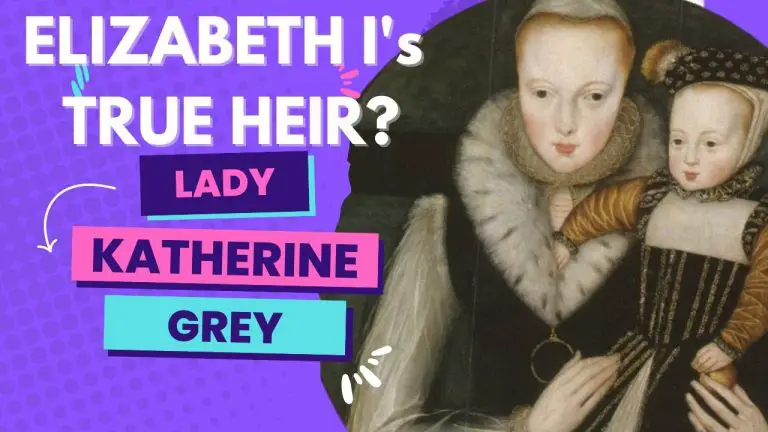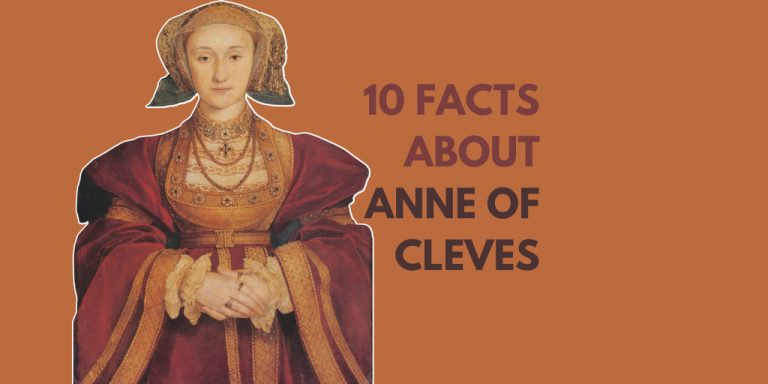Henry VIII’s children: Forget the lies you have been told
King Henry VIII famously had three children, all of whom went on to sit on the throne of England.
Henry’s quest to have a male heir led him to marry six times. His only son, Edward, succeeded to the throne after Henry’s death.
However, Edward VI died childless, aged just 15, which resulted in Henry VIII’s eldest daughter, Mary, becoming Queen (after she put down a failed coup by Lady Jane Grey). Despite their differences of opinion on numerous matters, when Mary I also died childless, Henry VIII’s youngest daughter, Elizabeth, became Queen. At least, this is the story that you would’ve probably been taught at school.
It’s the story that most history books tell. But it’s all lies.
Henry VIII had far more children than the three that sat on the throne of England. Some of them seem to have been written out of the history books completely.
So, how many children did Henry VIII have?
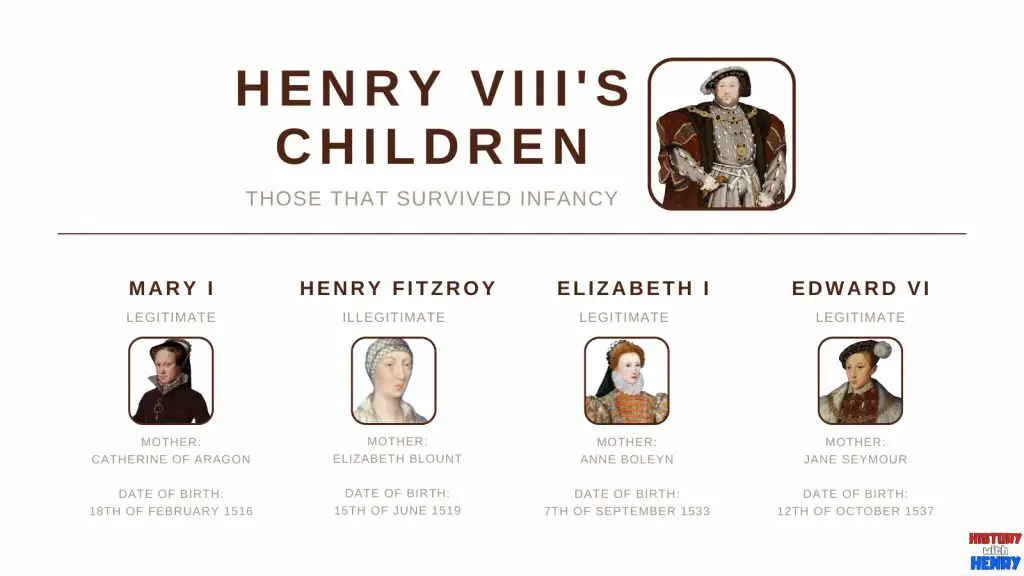
Unnamed stillborn daughter
On the 31st of January 1510, Henry VIII’s first wife, Catherine of Aragon, gave birth to a stillborn daughter. It is believed the pregnancy lasted just seven months.
Catherine later wrote to her father, King Ferdinand of Aragon, begging him not to be angry with her because it had been the will of God.
Henry, Duke of Cornwall
Henry, Duke of Cornwall, was born on New Year’s Day 1511 at Richmond Palace in Surrey. He was the first male child of Henry VIII and Catherine of Aragon.
Expensive celebrations were held to celebrate the arrival of the Tudor heir, including a huge tournament at Westminster. It was at this tournament that Henry famously jousted under the banner of Sir Loyal Heart.
Young Prince Henry had a lavish christening with Louis XII of France acting as his godfather. His godmother was the formidable Margaret of Austria.
However, Henry Duke of Cornwall died on the 22nd of February 1511, at just six weeks of age. The cause of his death remains unknown.
The second Henry, Duke of Cornwall
On the 17th of September 1513, Catherine of Aragon once again gave birth to a son.
The details are a little unclear; some accounts suggest he was also named Henry, and others do not give him a name. However, he would immediately be Duke of Cornwell as he was the heir apparent.
It seems that this child died within a matter of days or, more likely, hours.
Henry VIII was away in France at the time, and it is probable that this pregnancy did not reach full term either due to the King’s absence. He would not have been out of the country if the birth were expected.
Unnamed Stillborn Son
Sometime in November 1514, Catherine of Aragon once again gave birth to a son. This time, he was stillborn. We can assume that the pregnancy did not reach full term.
Princess Mary, the later Queen Mary I
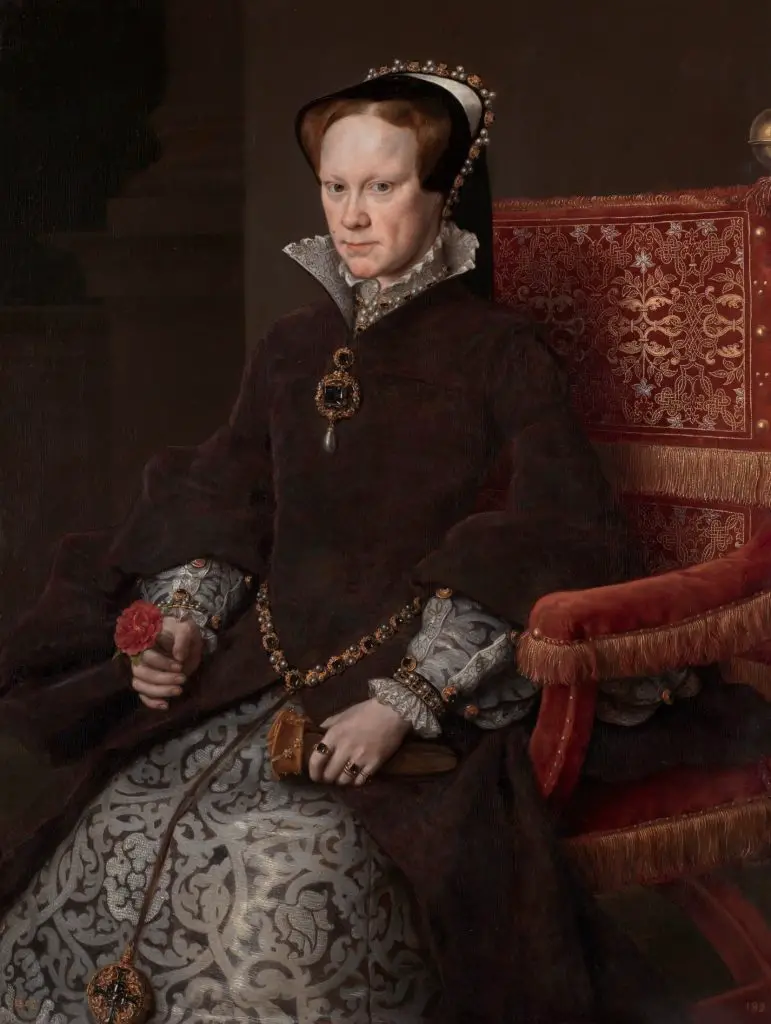
On the 18th of February 1516, Catherine of Aragon gave birth to a daughter who was named Mary. History would later show us that she was the only child of Henry and Catherine who survived infancy.
Princess Mary was a healthy child and became Catherine of Aragon’s only surviving child. Henry VIII adored Princess Mary and lavished every luxury upon her. However, that changed when she became a teenager, and she vigorously supported her mother when Henry was trying to annul their marriage.
When he did end the marriage with the break from Rome, Mary initially refused to accept her father was the head of the Church in England. She also refused to accept that she was now considered illegitimate and that her status had been downgraded from Princess Mary to Lady Mary.
She was sent to serve in her half-sister Elizabeth’s household. Although a healthy child, when Mary hit adolescence, her health grew worse. She had issues with menstruation and possibly depression.
The relationship between Henry VIII and his daughter broke down. It resulted in Mary not speaking with her father for a period of at least 12 months. Henry refused permission for his daughter to visit her dying mother.
Henry VIII’s marriage to his third wife, Jane Seymour, was a turning point in Mary’s fortunes. She encouraged the King to welcome his daughters back to court. This healing was further helped by Catherine Parr, who regularly had her stepdaughters with her at court. Mary’s relationship with Catherine Parr was good, despite the two having deeply different religious views. Mary was a believer in the rights of the Roman Catholic church, while Catherine was a reformer.
Henry VIII restored both Mary and Elizabeth’s rights to the succession in his will and in an Act of Parliament.
When her half-brother Edward VI succeeded her father, matters of religion took a further step away from the views of Mary Tudor. The English Reformation began, and the Church of England was born.
When Edward died, aged just 15, his advisors attempted to place Lady Jane Grey on the throne. However, supported by her half-sister Elizabeth, Mary managed to put down the coup after nine days.
Mary Tudor was now Mary I of England, and she set about reversing all of the changes that her brother had made in terms of religion.
There were huge tensions with her sister, who was a protestant, which resulted in Elizabeth’s arrest and imprisonment, firstly in the Tower of London and then under house arrest.
Mary married Philip of Spain at Winchester Cathedral on the 25th of July, 1553. However, Mary was 37 at the age of her marriage and had suffered frequent health issues since being a teenager. She had a false pregnancy in 1554, which lasted until the end of April 1555. She remained childless until her death.
She saw this false pregnancy as a judgement from god and set about her religious chances with greater zeal. She became infamous for the burning of protestants and earned the nickname Bloody Mary.
In 1557, she again thought herself pregnant, but again, it proved to be a false pregnancy. She died, possibly of cancer, on 17 November 1558 at St James’ Palace.
Unnamed Stillborn Daughter
On the 9th of November, 1518, Catherine of Aragon gave birth for the final time.
Once again, the pregnancy only lasted eight months, and Catherine gave birth to a stillborn daughter.
Henry Fitzroy, Duke of Richmond and Somerset
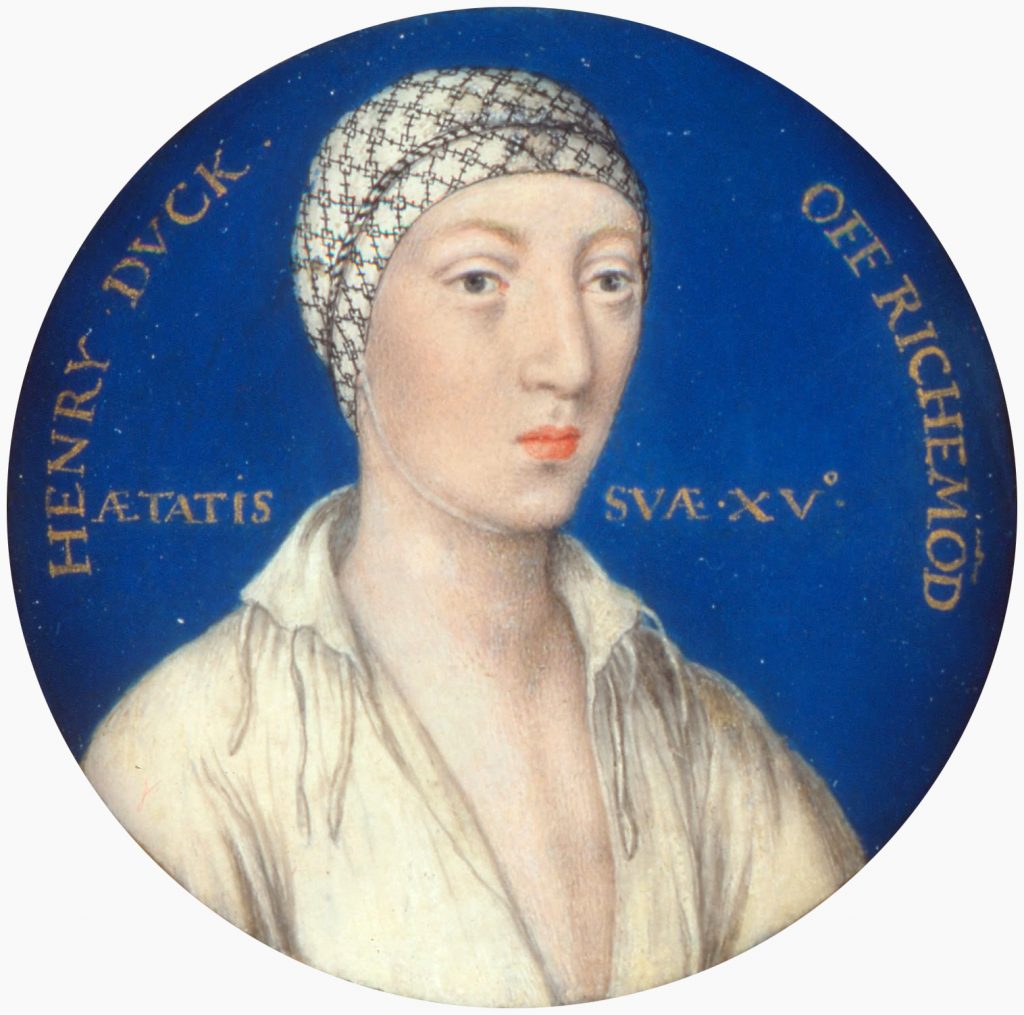
On the 15th of June 1519, a baby boy was born at the Augustine Priory of Saint Lawrence Blackmore near Ingatestone in Essex.
He was the son of Elizabeth Blount, Catherine of Aragon’s lady-in-waiting and the long-term mistress of Henry VIII.
Henry VIII always tended to take mistresses while his wives were pregnant. It is likely that Fitzroy was conceived during Catherine of Aragon’s final pregnancy.
Cardinal Wolsey acted as the boy’s godfather.
Henry VIII openly acknowledged the illegitimate child as his own and granted him the name Fitzroy– meaning son of the king. The young king wanted it to be known that he could father healthy male children.
King Henry took great interest in Henry Fitzroy. He even went as far as showing the child in court. It could have been the case that Fitzroy even spent time in some of the royal nurseries.
In 1525, Henry Fitzroy was given Durham House on the Strand as befitting his status. Then, on the 18th of June of the same year, Fitzroy travelled by barge up the Thames to Bridewell Palace. There, he was made Earl of Nottingham in an elaborate ceremony that included The Earls of Oxford and Arundel. It was the first time since the 12th Century that an illegitimate son of the King be made a peer. The six-year-old boy then left his father’s presence, only to return moments later with the Earl of Northumberland and the Marquess of Dorset. He knelt before King Henry once more, and his father made his Duke of Richmond and Somerset.
He was the only “double” Duke in the country.
Henry Fitzroy was not treated as illegitimate but as a royal prince. Titles and royal offices followed.
After the execution of Anne Boleyn and the fact that King Henry had declared illegitimate both of his daughters, there was serious consideration about making Henry Fitzroy legitimate and King Henry VIII’s heir.
However, Henry Fitzroy took ill, and he died at St James’ Palace on 23 July 1536. It was probably the same Tuberculosis that killed his grandfather, Henry VII, and later his half-brother, Edward VI.
Princess Elizabeth, the later Queen Elizabeth I
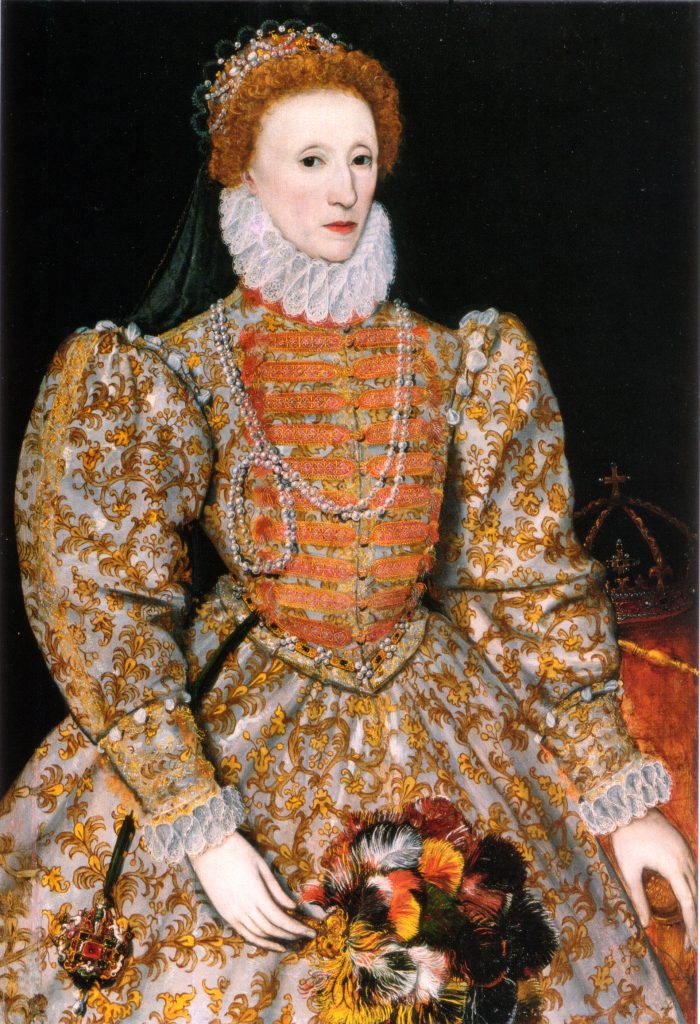
Henry VIII’s second wife, Anne Boleyn, gave birth to a healthy baby at Greenwich Palace on 7th September 1533. The child was named Elizabeth; both Henry’s and Anne’s mothers were called Elizabeth.
Princess Elizabeth would have been an initial disappointment to Henry VIII. He had, after all, moved heaven and earth to marry Anne Boleyn so she could prove Henry with a male heir. After the execution of her mother, Princess Elizabeth was declared illegitimate and referred to as Lady Elizabeth.
Elizabeth was a clever child who adored the final one of her father’s six wives, Catherine Parr. Catherine encouraged Elizabeth’s learning.
Lady Elizabeth navigated a difficult course during the reign of her sister, Mary, otherwise known as Bloody Mary. Mary had always held a grudge against Elizabeth and, in more extreme moments, would suggest that she was the child of Mark Smeaton as opposed to their father, Henry VIII.
She was arrested and accused of conspiracy against Queen Mary. However, she managed to survive, albeit under house arrest for much of Mary’s reign.
She became Queen Elizabeth I on the death of Mary on 17 November 1558. She was the final one of Henry VIII’s children to become monarch.
Queen Elizabeth I had a long and successful region and is generally considered one of the greatest monarchs in English history. She never married and died at Richmond Palace in Surrey on 24 March 1603.
The crown passed to James of Scotland, ending the Tudor dynasty.
The other pregnancies of Anne Boleyn
Anne Boleyn was pregnant at least twice more during her time as Queen of England. It is possible there was an additional pregnancy as well, but the historical evidence is inconclusive.
All of these pregnancies ended in early miscarriages.
Prince Edward, the later King Edward VI
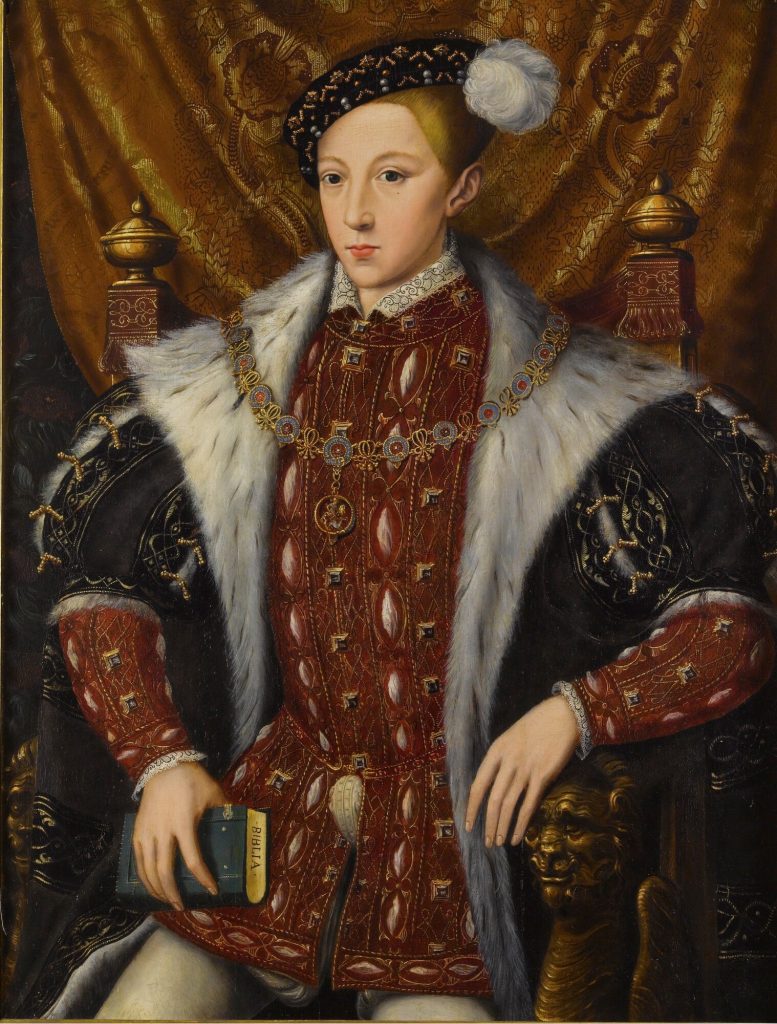
Henry VIII’s third wife, Jane Seymour, gave birth to a baby boy at Hampton Court Palace on 12 October 1537.
His mother died a matter of days after his birth.
His father, Henry VIII, showered Edward with every possible luxury and care. He ordered that the young Prince’s apartments be scrubbed with soap and water twice a day.
There is a myth that Prince Edward was a weak and sick child. However, other than one bout of illness, there is nothing in the records to suggest this.
Henry had an idea to marry Edward to the Scottish queen, Mary Queen of Scots, who was a similar age to the Prince. However, the Scots did not agree to this plan, which resulted in a war against Scotland.
Henry VIII died on 28 January 1547, and Edward became King of England at the age of just nine. Edward VI could not run the country himself, so his council was led by his uncle Edward Seymour, the 1st Duke of Somerset.
The council, backed by Edward, began the process of the English Reformation and the establishment of the Church of England.
Seymour was replaced by John Dudley, who continued the religious changes.
Edward VI became ill in January 1553. It soon became clear to the young king he was dying. He wrote his own device for the succession, which tried to prevent his Catholic sister, Mary Tudor, from taking the crown after his death. (As we have seen, this failed.)
Edward died on 6 July 1553 at Greenwich Palace at the age of 15.
Other Illegitimate children of Henry VIII
Henry VIII had just three legitimate children who survived infancy. He openly acknowledged one illegitimate child – Henry Fitzroy; however, it is likely that he had others.
Henry took mistresses on a regular basis, especially when his wives were pregnant.
Catherine Carey was Mary Boleyn’s daughter. She remains the most likely of the potential illegitimate children to have been one of Henry VIII children.
Others include:
Catherine Carey’s brother, Henry Carey (Elizabeth I would joke and call him brother when she was Queen).
Thomas Stukley, his mother was Jane Pollard
John Perrot, his mother was Mary Berkely
Ethelreda Malte, her mother was Joan Dingley.
However, it is likely that the list of illegitimate children is longer than this.

